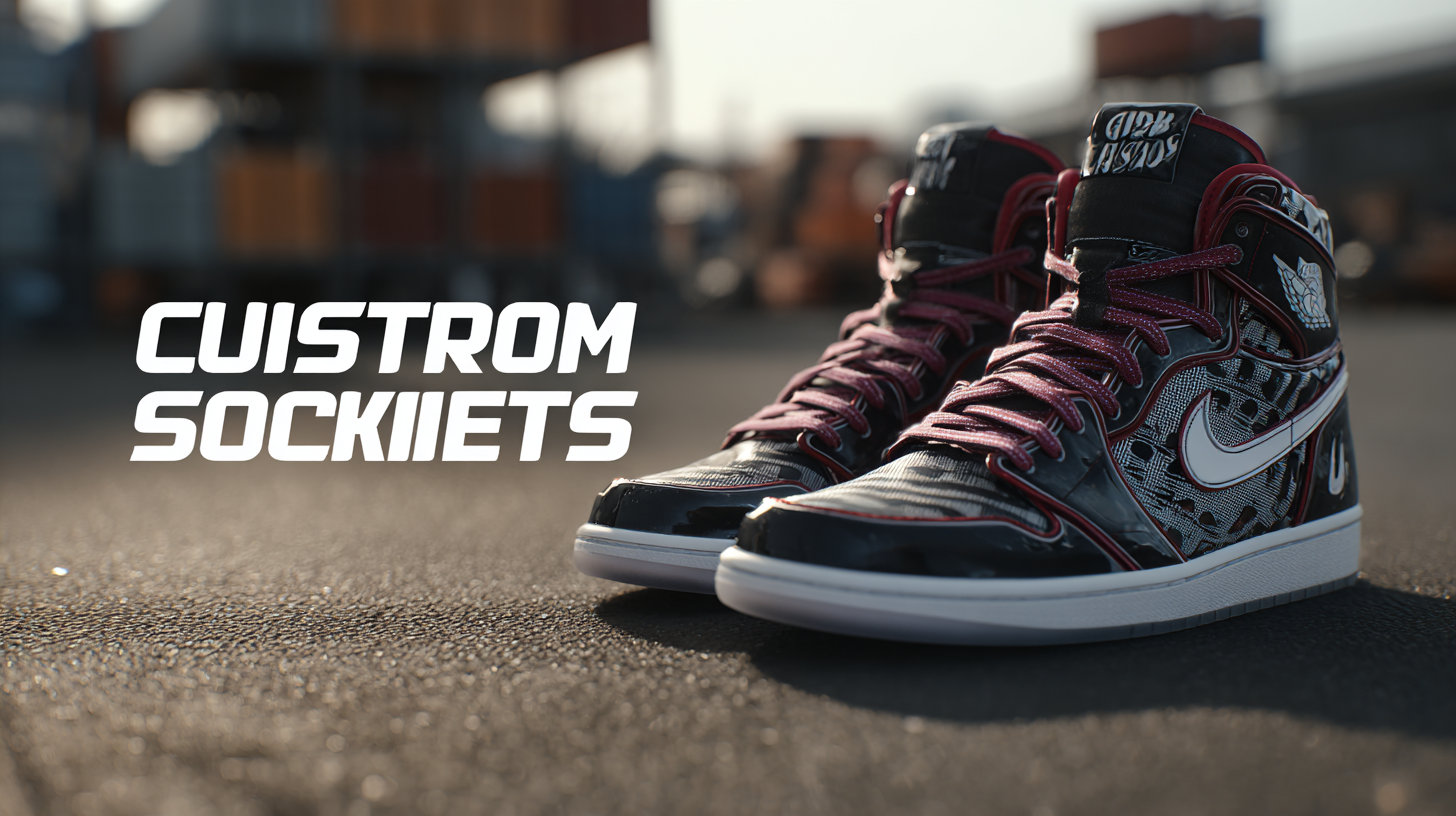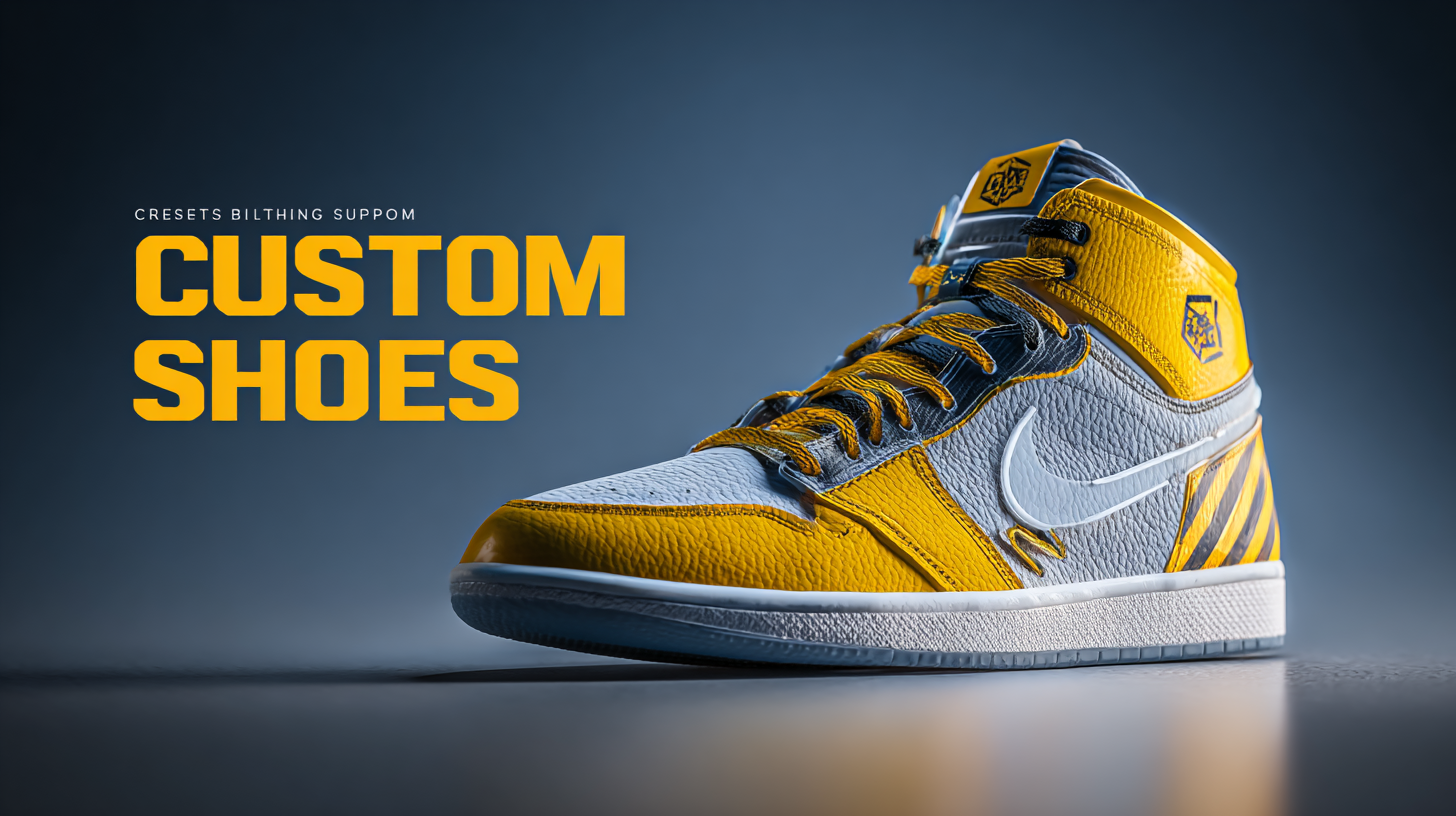
In the rapidly evolving landscape of the sports footwear industry, the demand for Custom Sports Shoes has significantly surged, with market reports projecting a valuation increase from $80 billion in 2020 to an estimated $120 billion by 2025. This growth is fueled by a shift towards personalized athletic gear, as consumers increasingly prioritize both performance and individuality in their purchasing decisions. Notably, a study from Grand View Research highlights that 60% of consumers are willing to pay a premium for customized products, underscoring the importance of bespoke design in enhancing brand loyalty and differentiation. As brands navigate this competitive market, adopting a strategic approach to sourcing Custom Sports Shoes will be crucial in not only meeting consumer expectations but also solidifying their place in this lucrative segment.

The global athletic footwear market is experiencing significant growth, projected to reach a value of USD 75.5 billion by 2033, with a compound annual growth rate (CAGR) of 4.9%. This surge is driven by rising health awareness, fitness trends, and the increasing popularity of sports, prompting consumers to invest in high-quality athletic shoes. Furthermore, one prominent trend within this market is the customization of sports shoes, catering to the unique preferences and needs of individual athletes and fitness enthusiasts. Customization not only enhances performance but also allows brands to build a distinctive identity in a competitive landscape.
In addition to traditional athletic footwear, there is a notable rise in the demand for innovative and stylish options, such as light-up shoes. This segment is particularly appealing to children and younger demographics who seek both functionality and fashion. As children's footwear continues to evolve, the market for light-up shoes is anticipated to grow significantly between 2025 and 2035, reflecting broader trends of personalization and playful aesthetics. Brands focusing on these dynamic segments will likely capture a larger share of both the athletic and children's footwear markets as consumer preferences shift toward more engaging and customizable options.
 When it comes to elevating your brand through custom sports shoes, it’s crucial to understand the various types available in the market. Different sports, styles, and consumer preferences influence the design and functionality of athletic footwear. For instance, running shoes prioritize cushioning and support, while cross-training shoes focus on versatility, offering stability for varied activities. Understanding these categories can help you align your custom shoe offerings with your brand’s target audience and specific market needs.
When it comes to elevating your brand through custom sports shoes, it’s crucial to understand the various types available in the market. Different sports, styles, and consumer preferences influence the design and functionality of athletic footwear. For instance, running shoes prioritize cushioning and support, while cross-training shoes focus on versatility, offering stability for varied activities. Understanding these categories can help you align your custom shoe offerings with your brand’s target audience and specific market needs.
The global athletic footwear market is projected to reach a substantial size of $75.5 billion by 2033, growing at a CAGR of 4.9%. This growth underscores the rising demand for specialized sports shoes tailored to enhance performance and lifestyle. Customization is key here; brands that can offer unique designs or features that resonate with consumers' individual athletic needs are likely to stand out. As the market evolves, staying informed about trends and consumer preferences in custom sports shoes will be vital for brands looking to capture a share in this burgeoning segment.
The integration of 3D printing technology in the design of custom sports shoes marks a revolutionary shift in the footwear industry. With the global smart shoe market projected to reach remarkable heights by 2035, leveraging innovative manufacturing techniques like 3D printing allows brands to create tailored designs that meet specific athletic requirements. This technology enables rapid prototyping and customization, reducing production time and minimizing waste, which aligns with the growing consumer demand for personalized athletic gear.
Recent reports indicate that the U.S. shoe insoles market is projected to grow at a CAGR of 5.1% from 2024 to 2030, reflecting an increased focus on performance-enhancing features within footwear. Brands can capitalize on this trend by investing in advanced materials such as lightweight polymers and breathable fabrics that complement the precision offered by 3D printing. As competition intensifies, incorporating cutting-edge technologies not only elevates product offerings but also strengthens brand positioning in a rapidly evolving market landscape.
When sourcing custom sports shoes, evaluating manufacturers based on key metrics is crucial for ensuring quality and reliability.
One important factor to consider is the manufacturer's experience in the industry.
Look for companies with a proven track record; those who have been in the business for several years often have established processes that enhance product quality.
Tip:
Request samples before making a bulk order. This allows you to assess the craftsmanship and materials used in the shoes firsthand.
Pay attention to details such as stitching, flexibility, and overall design, as these can significantly influence the final product's appeal.
Another metric to evaluate is the manufacturer’s certification and compliance with industry standards.
Certifications can indicate adherence to quality management systems and ethical manufacturing practices.
Inquire about their quality control measures during production, which should include regular inspections and feedback loops to address any issues quickly.
Tip:
Consider the manufacturer’s flexibility in accommodating your specific design needs.
A responsive supplier who is willing to iterate on designs and provide suggestions
can help you develop unique products that resonate with your brand and target audience.
When analyzing the pricing strategies for custom sports shoes, it's essential to consider the balance between costs and brand value. Custom sports shoes are not just products; they represent a brand's identity and market positioning. By understanding the production costs, a brand can effectively set prices that reflect both the quality of the materials used and the innovation embedded in the design. Brands can adopt various pricing strategies, such as premium pricing for limited editions or competitive pricing to penetrate new markets. This strategic approach ensures that the brand not only covers its expenses but also leverages its perceived value.
Furthermore, conducting a SWOT analysis can illuminate areas where brands can refine their pricing strategies. Strengths such as brand loyalty and unique design capabilities can justify higher pricing, while weaknesses like high manufacturing costs may necessitate cost-efficient production techniques. Opportunities in emerging markets offer pricing flexibility that can cater to diverse consumer needs. Conversely, market threats from competitors necessitate a keen understanding of pricing dynamics to maintain a competitive edge. Ultimately, effective pricing strategies rooted in both cost analysis and brand value enhancement can significantly elevate a brand's position in the market.

